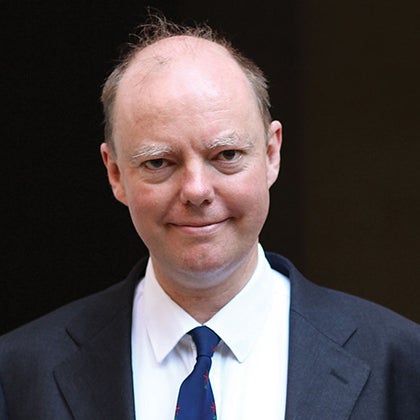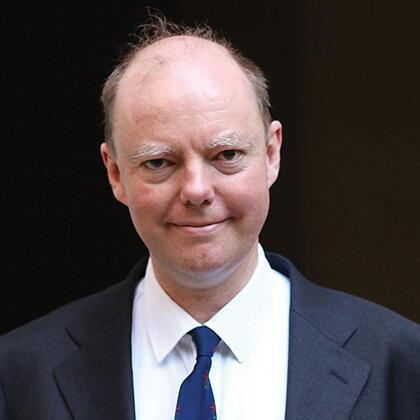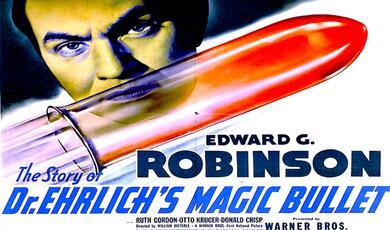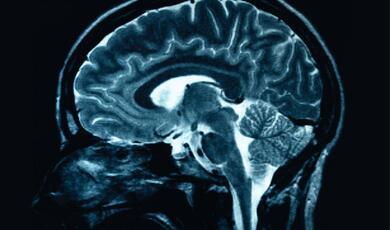The Treatment of Cancer
Share
- Details
- Text
- Audio
- Downloads
- Extra Reading
The treatment for people with many cancers has been transformed in the last two decades, and further major improvements are expected to occur over the next twenty years. Improved surgery and radiotherapy have been joined by less toxic chemotherapy targeting specific genetic abnormalities in cancer cells. Better genetic understanding of cancer and harnessing the immune system to fight disease are among the approaches revolutionising a group of diseases once seen as incurable.
Download Text
26 October 2016
The Treatment of Cancer
Professor Christopher Whitty
Being told ‘you have cancer’ conjures up expectations of treatments with horrendous side-effects followed by a high probability of a rapid and painful death. For those given the diagnosis 30 years ago, for many cancers this would have been a realistic assessment of the future. Treatment for several major cancers has evolved to the point that the substantial majority who have treatment will be alive and in good health a decade later with low likelihood of recurrence. The damage and side-effects of treatment, whilst seldom trivial, are improving. This lecture will cover the transformation in the treatment of cancer that have already occurred within our generation, and likely improvements in the next two decades. The aim is to demystify something most families in the modern era will be touched by.
In the time of Sir Thomas Gresham very little accurate was known about cancers; for example the leading physician Dr Tulp, famously captured by Rembrandt, believed cancer to be contagious. Because most people would die before the age most cancers become a serious problem it was relatively rare. Serious treatment was difficult before accurate diagnosis, anaesthesia, radiation and the modern drug age appeared. The last 100 years, and in particular the last 3 decades have seen a transformation. This talk will cover several broad areas: trends in cancer survival, diagnosis, surgery, radiotherapy, cytotoxic chemotherapy, targeted treatments, hormone therapy, immunotherapy, policy problems and the future.
Epidemiology
If you look only at the headline numbers the remarkable reductions first in infectious diseases and then in cardiovascular disease explored in previous lectures are not obvious cancer. This is however misleading. Most cancers are mainly a disease of older age, and as advances in public health and medicine mean other diseases less likely to kill people in middle age, cancer inevitably becomes relatively more likely to be the cause of mortality. If you look however at individual cancers, including some of the most important ones, the trends in improvement in mortality have been remarkable. For some cancers such as testicular cancer the expectation is now that almost everybody affected will survive. For many cancers such as breast cancer (Figure 1a), prostate cancer (Figure 1b) or Hodgkin’s lymphoma survival has moved from a position where most people died within a decade to one where most people now survive. Virtually all cancers have seen substantial improvement in survival during the lifetimes of those listening to this lecture (Figure 2). A small number of cancers remain stubbornly difficult to treat, including lung cancers and brain cancers.
Figure 1: prostate cancer (L) and breast cancer 10 year survival, by decade of diagnosis
Linked to improvements in mortality are reductions in the side-effects and damage caused by treatment. Because cancer cells are our own cells it is less easy to kill them without damaging normal cells than for example with infections. Many of the advances in cancer treatment are in reducing the side-effects and negative impact of cancer treatment as well as in removing, killing or controlling the cancer itself.
As with most advances in medicine, this is not due to a single breakthrough, or indeed a single field of scientific study. It is due to multiple advances, most individually modest, across all fields of diagnosis and treatment.
Figure 2. Changes in 10 year cancer survival, 1971-2011. CRUK
Diagnosis
The starting point for any serious disease has to be diagnosis. The key to cancer treatment is correctly to identify those who probably have cancer at an early stage, then to make sure that it really is cancer so that normal body tissue is not damaged or removed unnecessarily. Although many scientific areas have contributed to better diagnosis, probably the three most important are radiology, various forms of endoscopy and pathology.
Simple X-rays were revolutionary in identifying and delineating cancers in areas such as the lung. The advent of CT scanning, and then the better resolution of MRI scanning opened up possibilities to identify the exact location and size of cancers in important structures such as the brain or liver. Newer techniques such as PET scanning and nuclear medicine where methods like radiolabelled chemicals taken up by tumours can identify the spread of particular cancers have allowed radiologists to delineate cancers with greater accuracy and consistency. They have also been able to provide targets for biopsies from difficult to reach sites using radiological guidance.
Endoscopic methods of getting into spaces with a camera on a flexible tube such as the gut (colonoscopy), lung (bronchoscopy) or bladder (cystoscopy) now allow doctors to see many cancers directly, sample them with biopsies, and in many cases treat them directly through the endoscope at an early stage.
In parallel with this, improvements in histology (looking at tissues down a microscope) allow cancers to be diagnosed with greater reliability. Special stains can be used to identify markers on the cancer cells which mean they are susceptible to specific treatments. For example, oestrogen receptor positive breast cancer cells susceptible to tamoxifen hormonal treatment can be identified.
Surgery
Surgery is the oldest treatment of cancer, although it was difficult to use it for anything other than superficial cancers until anaesthesia came of age for obvious reasons. It remains the mainstay of treatment for many cancers. If a solid cancer (most cancers other than leukaemia and lymphoma) is diagnosed early before it has caused metastases, cutting it out provides a complete cure. Greater ability to detect cancers early, and determine the margins of a cancer and their spread has meant that it is both possible to cut all the cancer out and as importantly avoid cutting out unnecessary healthy tissue. Wherever possible less surgery is better than more, provided the cancer is fully removed. Smaller operations through smaller holes have led to improved recovery. The best of all is where science demonstrates no surgery is needed at all. A recent example was a trial published this year showing that in people with selected localised prostatic cancer no treatment had the same survival as surgical removal. The technical aspects of surgery have improved remarkably and continue to do so. High-tech examples include robot assisted surgery which allows more accurate treatment. An example of an apparently simple advance is injecting dye into tumours and seeing which lymph nodes they go to (sentinel lymph nodes). If the first lymph nodes they spread to do not have cancer cells it may avoid a major operation removing perfectly healthy tissue.
Radiotherapy
Radiotherapy for cancer is the second oldest treatment, dating back to the 1890s. Cancer cells are more susceptible to radiation than normal cells, and because radiation damages the DNA in cancer cells and cancer cells generally are less able to repair their DNA they are more likely to die than normal cells when exposed to radiation. By providing radiation in is short doses repeated over time (fractionation) it was possible to produce the same effect of killing cancer cells whilst reducing the damage to normal cells than a single large radiation dose provides. Advances in engineering allowed much better focussing of beams of radiation and this allowed multiple beams from different angles to concentrate their fire on a particular area where the tumour existed with only small amounts of radiation in other, normal tissue. Computer guided treatment has allowed steadily increasing accuracy. Newer techniques such as proton beam radiotherapy will also help to improve the accuracy of delivering the radiation dose for certain sites and cancers. This helps to minimise the damage to normal tissues. The side-effects of radiotherapy are related to where the cancer is. Other than generalised tiredness and short-term damage to the skin rather like severe sunburn the damage of radiotherapy will be only to the area exposed to radiation. Symptoms such as nausea are for example likely in radiotherapy to the abdomen or parts of the brain. Anywhere in the body not in the radioactive beam will be spared direct damage.
Chemotherapy
Cytotoxic chemotherapy (chemotherapy as most people understand it) was the third cancer treatment class to be developed. The chemotherapy agents kill cells particularly when they are dividing, with different drugs working at different stages of the division of cells mainly by damaging the genetic material in cells. Since cancer cells are dividing all the time they are particularly susceptible, and this makes chemotherapy drugs much more toxic to cancers than normal cells. Other cells in the body which divide regularly such as those in the gut, mouth, bone marrow and hair are also relatively susceptible however, and this explains why many of the side effects of chemotherapy are seen. Repeated cycles of chemotherapy gradually kill off cancer cells but normal cells have time to recover.
The drugs come from multiple sources ranging from mustard gas developed in the First World War to the periwinkle flower. A gradually increasing array of drugs, used in different combinations for different cancers, have incrementally helped improve the cure rate for cancer whilst reducing the unpleasant side effects of chemotherapy. Different chemotherapy drugs have different side-effects. For example whilst many people think that all chemotherapy causes complete hair loss this is actually only true for a subgroup. Nausea is probably the most widely disliked side-effect of chemotherapy but the combination of improved chemotherapy regimens and better anti-nausea drugs have reduced (but not eliminated) this major limitation. Bone marrow suppression can reduce the body’s ability to fight serious infections.
Targeted treatments, hormone treatments and immunotherapy
The modern era of cancer treatment has introduced many new drug classes which are not chemotherapy in the conventional sense. The first is small molecules providing targeted therapy against cancer. The concept of targeted therapy is that the drugs specifically attack the cancer cells and have much smaller or even minimal effects on other cells in the body. Small molecules enter the cancer cells and interfere with their chemical pathways, or bind to specific receptors on cell surfaces receptors. The most well-known example of this is imatinib, a tyrosine-kinase inhibitor used for treatment of Philadelphia-chromasome positive CML leukaemia. This drug had a major impact on mortality, and survival is now around 85%- at a substantial financial cost. It turns CML in many people into a chronic disease like diabetes; it will require lifelong treatment rather than ‘cure’.
The second major group has been hormone treatments (or more accurately hormone-blocking treatments) for those cancers, in particular breast, prostate, testicular and ovarian cancer which are stimulated by specific hormones. Providing drugs which block the effect of the hormones on the cancers can lead to much better survival even in people who have metastasis. Probably the most well-known is tamoxifen for breast cancer, which has transformed survival in oestrogen-receptor positive (ER+) cancers, but many other highly effective hormonal treatments exist.
The most rapidly moving field in cancer treatment is using the immune system and its components (especially antibodies) to attack cancers. The best established method is to use antibodies which block particular receptors on cancer cells. The antibody Herceptin used in specific forms of breast cancer is probably most widely known but many others are developing rapidly. In the longer run using antibodies to deliver drugs and radiation emitting chemicals may be a way to target treatments on specific cancers and minimise effects on normal cells although this is currently speculative.
There is also the potential to harness the immune system itself. The reason cancer does not develop more often is that the immune system detects and kills early cancer cells before they can cause problems. Successful cancers have by definition evaded the immune system. Making the immune system more effective at finding and killing these cancers is possible by several means. A currently leading method is inhibiting immune checkpoints which are ways in which cancer cells signal to stop immune system attacking them; if the inhibition is removed the immune system can recognise cancer cells as a threat and attack them (but may also attack normal cells causing side effects). Activating the immune system to recognise cancer by way of vaccines is another avenue.
Policy issues and forward look
There is likely to be an explosion of new drugs for cancer over the next two decades. The positive effects of this are going to be substantial. It is likely that many current cancers will become either largely curable, or treatable in the same way that diabetes is treated as a chronic disease which people live with for many decades on treatment. The cost of the new drugs is however likely to be very substantial, and since the health budget of most countries, including the NHS, is fixed any new costs for cancer drugs will have to come from other health priorities. Worryingly the cost, in constant terms, of drugs for cancer has massively increased over the last two decades and looks set to continue to increase. For many new drugs because of the way they are marketed the cost of an extra life year may be hundreds of thousands of pounds or dollars. How resource constrained health services will cope with this is a serious policy issue.
More important however than new drugs which extend the life of people with terminal cancer by small amounts is early diagnosis. The key to a complete, long-lasting and affordable treatment for cancer is diagnosing it early enough for existing, simpler and less destructive treatments to be effective. Delays of course occur for many reasons starting from individuals not recognising that the symptoms they have are potentially serious, through doctors being slow to diagnose or start treatment, through to ineffective treatments being used in the first instance. Speeding up diagnosis of cancer would lead to much better outcomes and remains the most important priority in policy terms, but is not easy. One way to do this is through screening but screening is only useful if it leads to better treatment outcomes. The risk of screening is that whilst you increase the number of true cases of disease identified, it inevitably picks up large numbers of people who don’t have disease who then have biopsies or even treatment which may be damaging. For example modelling current screening systems for breast cancer (using x-rays) and cervical cancer (using smears) suggest they probably are effective and cost-effective whilst screening for prostate cancer has no effect on survival in trials.
Both cancer and the treatment of cancer produce substantial symptoms. Alongside diagnosis and treatment of cancer has to be palliative care to reduce symptoms. It should be available to people at all stages along the cancer journey including, importantly, the very large number of people who will make a full recovery but have significant symptoms due to the disease and the treatment. It is not just for people who are dying.
The treatment of many cancers has improved enormously over the last three decades as science has advanced, and this improvement shows no sign of slowing and may even accelerate over the next three decades. It is realistic to say that soon the majority of those diagnosed with cancer will be alive and well a decade later and it is unlikely that their cancer will recur after this period, and the period when the great majority are alive a decade later is probably not far into the future. This improvement however is not made up of breakthroughs but of multiple small steps, many of which are in isolation relatively modest. An example is breast cancer. The substantial improvement seen in the last three decades have been made up of small steps which included improvements in screening, diagnosis, surgery including sentinel nodes sampling, radiotherapy, chemotherapy, hormonal therapy such as tamoxifen, targeted therapy such as Herceptin and are likely in due course to include immunotherapy.
With some cancers the great majority of people affected will live out their normal lifespan. For many there have been substantial improvements in mortality. In a small minority including important cancers such as lung cancers or brain cancers very little improvement has been seen over the last three decades. What is true for virtually all cancers however is that treatment is unpleasant, difficult and expensive. It is not always successful particularly for some largely preventable cancers such as lung cancer. Cancer prevention will always be better than cure, so it is on the prevention of cancer that the next lecture in this series will concentrate.
© Professor Christopher Whitty, 2016
Gresham College
Barnard’s Inn Hall
Holborn
London
EC1N 2HH
Part of:
This event was on Wed, 26 Oct 2016
Support Gresham
Gresham College has offered an outstanding education to the public free of charge for over 400 years. Today, Gresham College plays an important role in fostering a love of learning and a greater understanding of ourselves and the world around us. Your donation will help to widen our reach and to broaden our audience, allowing more people to benefit from a high-quality education from some of the brightest minds.


 Login
Login







